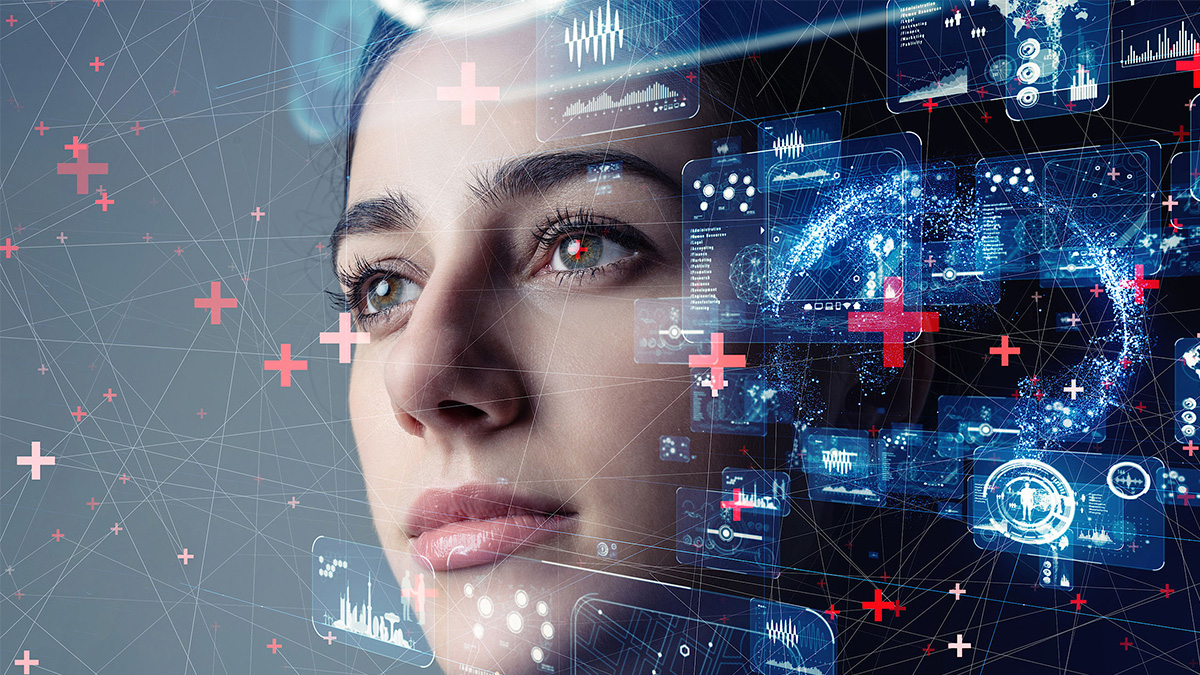5G technology will power a wide range of future industries from retail to education, transportation to entertainment, and smart homes to healthcare. It will make mobile more essential than it is today. What is 5G? What are the industry applications of 5G technology?
What is 5G?
5G refers to the 5th Generation Wireless System. The 3GPP (3rd Generation Partnership Project), a global telecommunications standardization body, is the main setter of 5G specifications. Since 2015, it has launched 5G standardization pre-research to understand the new services and technical requirements required by the market. In 2018 and 2019 it released its first and second stage 5G technical standards respectively.
Three goals set by the International Telecommunication Union (ITU) for the formulation and use of various 5G standard technologies are to achieve: enhanced mobile broadband (eMBB), high reliability and low latency communication (uRLLC), and large-scale Machine type communication (mMTC). In short, the three major characteristics of 5G are: "high speed", "low latency" and "multiple connections".
From 1G, pure analog voice communication, to 2G for sending text messages, to 3G for basic Internet access, to 4G, where many people use mobile phones to watch movies and play games, developments in mobile phone technology have surpassed those of the computer. This was absolutely unexpected when mobile communication first started. Every generation of communication technology has responded to the evolution of market demand. When new services are launched, consumers' usage habits also change. However, compared with 3G and 4G, which developed in response to consumers' needs for mobile services, 5G has developed more as a way to meet the needs of industrial development, having a wider range of applications than previous generations of communication technologies.
In addition to its high speed, two other features of 5G are its multi-connection and low latency capabilities. These features help enterprises accelerate digital transformation and solve many of the pain points in the development of factory automation technology.
Taking automated guided vehicles (AGVs) commonly used in automated production lines as an example, AGVs are mainly used to perform logistics handling between production lines, which can improve productivity and reduce labor costs. However, AGVs are mostly driven by Wi-Fi connection. The frequency band used by Wi-Fi is a license-free open frequency band. Not only is the connection quality susceptible to interference from other devices, but also information security risks. In addition, when Wi-Fi switches between different base stations, it needs to be reconnected. This may cause the unmanned vehicle to be disconnected or stopped during the moving process, which can affect the operation efficiency of the production line. Through the low-latency and multi-connection features of 5G, the unmanned vehicle has a more immediate signal response time. Multiple devices can be connected at the same time through a command and dispatch platform, allowing for multiple tasks to be performed with improved stability.
In addition to unmanned vehicles, another key technology in industrial automation is automatic monitoring. Automatic monitoring is the monitoring of production line status through artificial intelligence image recognition technology. For automatic monitoring to be carried out smoothly, the high transmission speed of 5G is required to transmit high-resolution images to the back end of the computer in real time. In the event of industrial safety hazards, with low-latency support, the system can quickly react. In the Internet of Things (IoT) era where all devices are connected and driven by the network, 5G will penetrate into various vertical industries, such as smart retail, smart medical care, and smart transportation, and enhance the development of infrastructure in various fields.
Industry Applications of 5G
5G is a trend of the future that will not only affect the technology industry, but will affect almost all existing industries. Below explains the impact of 5G on 20 major industries.
- Manufacturing
5G technology can help manufacturing operations become more flexible and efficient, while improving safety and reducing maintenance costs. This will enable manufacturers to leverage automation, artificial intelligence, Augmented Reality (AR), and the Internet of Things to achieve "smart factories."
- Energy and Utilities
5G can bring more innovative solutions to the production, transmission, distribution and use of existing energy industries, and is expected to develop the next wave of smart grids with greater functionality and efficiency. 5G technology can connect and integrate many unconnected energy-consuming devices at low cost. It will improve grid monitoring and make energy demand forecasting more accurate, making energy management more efficient, and reducing peak power and overall energy costs.
- Agriculture
Farmers around the world are using IoT technologies to optimize overall agricultural production processes such as water management, irrigation and fertilization, livestock safety, and produce monitoring. 5G technology can facilitate the adoption of IoT devices to make this happen.
- Retail
Shopping on mobile devices is very popular around the world. More than 100 million Americans shopped on smartphones in 2018 thanks to 4G/LTE technology. Just imagine, if the Internet speed increases by 10 times, how will the mobile shopping experience be affected?
In addition, 5G technology supports AR/VR applications, so there is an opportunity in the retail industry to launch more VR/AR experiences in physical stores, such as try-on, virtual space, etc. According to consumer shopping habits, the same function may also be experienced at home. Worldwide spending on AR/VR applications in retail displays reached approximately $5.9 billion in 2020.
- Financial Services
As financial institutions pay more and more attention to the promotion of mobile devices, 5G technology is expected to be used in one-way and two-way services.
5G greatly improves security and network speed, and can complete transactions faster and more secure than any existing process on mobile phones. The user may be contacted either by AI or to a remote bank clerk, depending on the needs of users. In addition, 5G could allow wearables, such as smart watches, to share biometric data with financial services to instantly and accurately verify user identities and complete transactions faster and with more security.
- Media and Entertainment Careers
5G will profoundly impact media and entertainment on multiple levels, including mobile media and advertising, home networking and television. It is also critical to improving the experience of new interactive technologies such as AR/VR.
- Health Care Industry
5G can improve global healthcare in a number of ways, and the medical industry will be able to take advantage of high-speed internet features, greatly reducing the time it takes to read large amounts of patient data, such as personal information, clinical research, and high-resolution MRI and CT images.
5G can also enable remote monitoring equipment (such as wearable technology) to send patient health data to doctors in real time. This will allow doctors to use sensors to more accurately monitor patient in their natural environments and achieve a more comprehensive and adaptive evaluation of the patient’s condition.
- Transportation Business
From buses to taxi fleets, as 5G networks become more commonplace, 5G technology can improve the transparency and deployment of transportation systems.
- AR/VR
The future of augmented reality (AR) and virtual reality (VR) depends on broader, more reliable, and more consistent 5G networks. Of course, the premise is that the 5G network must be mature enough to achieve the primary goal of reducing development costs.
AR and VR need to process huge amounts of data. 5G has 10 times less latency, 100 times more traffic and capacity, and 100 times higher network efficiency, which means 5G can solve these problems.
- Insurance
5G can help insurers make more comprehensive and confident decisions because they have access to more accurate data.
- Education
As 5G paves the way for AR/VR experiences, teachers will be able to use these technologies for a variety of new educational technologies. For example, students can take virtual field trips around the world, from the pyramids of Egypt to the Great Wall of China, without ever leaving the classroom.
- Cloud Computing
Due to the low throughput, high latency and inconsistent connectivity of mobile devices, the functional and feature aspects of cloud computing are often diluted. But 5G networks can increase reach and flexibility. The high throughput and low latency of 5G will solve existing problems and take cloud computing to another level.
- Gaming Industry
In the "subscription streaming" society, media such as Netflix and Spotify are very popular with users, and 5G solutions can open up a whole new market for the gaming industry.
The current 4G latency is around 10 milliseconds, while 5G can handle it much faster, speeding up the latency to around 1-2 milliseconds. Fast computing allows users to get a better gaming experience, making quality improvements more cost-effective.
- Real Estate
Based on the existing technology, real estate agents in Taiwan have used the 360-degree home inspection service, allowing buyers who want to buy a home to view the items of interest first at home. With the development of 5G, AR/VR may be used in exhibition and sales centers or by real estate brokers in their office, to allow consumers to initially experience objects through AR/VR, without the need to travel to the object’s location, thus saving time and improving overall efficiency.
- Public Safety
5G networks can shorten the time needed to receive messages and enable wider use of the network to enhance public safety.
Through a 5G network, a rescue team will be able to quickly assist in a rescue by first reviewing real-time images through secure communication or media sharing.
- Supply Chain Management
Installing 5G sensors on a device can immediately provide massive amounts of data where needed. This data may contain information on location, temperature, humidity, pressure or other information that is critical to the supply chain.
- Catering
With the development of 5G, the restaurant industry will be able to increase interaction with consumers and reduce raw material costs.
- Tourism
There are many tripartite collaborations between governments, tourism operators and technology companies. Tourism operators work with technology companies to research and develop 5G connectivity that will create "smart tourism" and improve the travel experience.
- Military
Communication is the key to military strategy. The instant data collection and transmission of communication network equipment is crucial, and 5G technology can maximize data transmission speed.
- Advertising and Marketing
5G can transform display advertising into an "immersive experience" that brings content and audiences closer together.



.jpg)










.jpg)